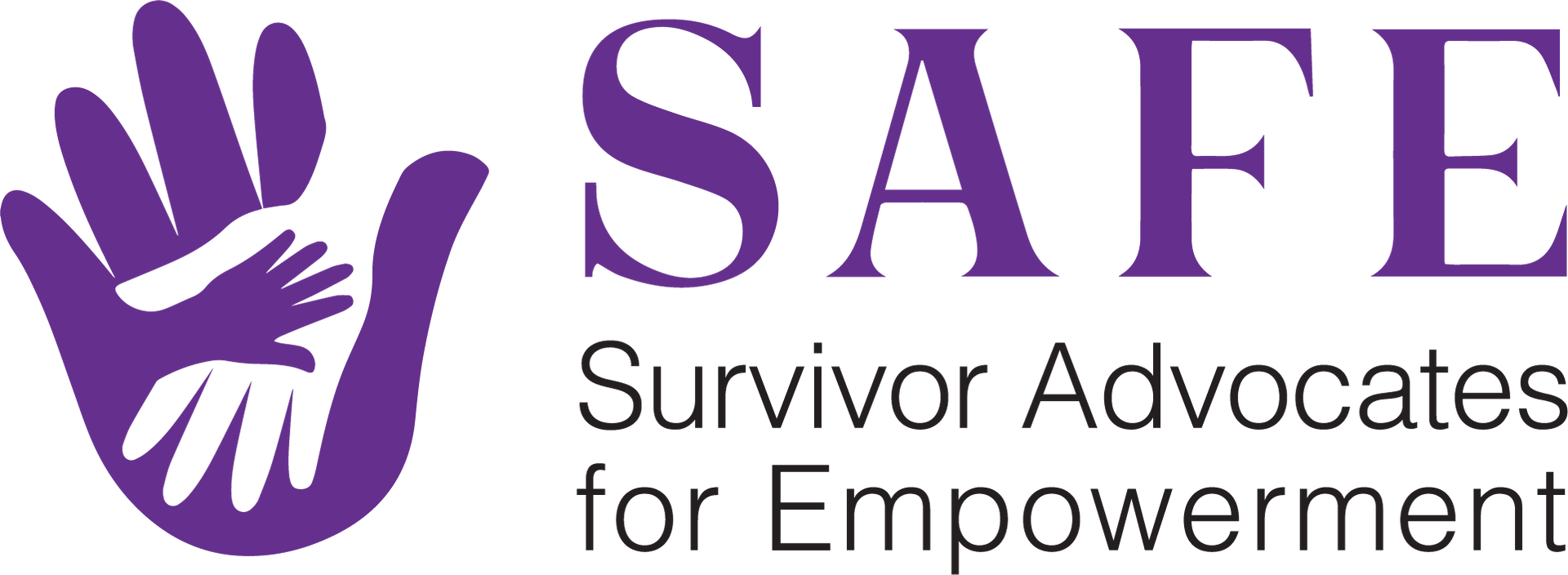SAFE Amplifies Survivor Voices in Community Initiatives
Empowering communities with survivor-led insights to address, prevent, and advocate against gender-based violence.
SAFE Community Services
Many people don’t fully understand the pervasive impact of gender-based violence (GBV), leaving survivors without the support and awareness they deserve. Employers and community organizations often fail to recognize the signs of abuse or create environments where survivors feel safe. Meanwhile, those who want to help may struggle to find resources or understand how to provide meaningful support. Additionally, engaging boys and men as allies in the fight against GBV remains a critical yet under-addressed challenge.
SAFE addresses these pain points through tailored workshops, training programs, and community engagement. Our workshops tackle each of these challenges directly—raising awareness about the epidemic of GBV, teaching employers to recognize signs of abuse and create supportive workplaces, and providing practical resources for those who want to help a loved one or colleague.
We also prioritize engaging men and boys to challenge harmful norms, promote healthy masculinity, and encourage them to become advocates for survivors. By fostering inclusive conversations, SAFE helps build a collective commitment to preventing GBV and supporting survivors.
If you’re looking to make a difference in your community, explore the options we offer to raise awareness, educate, and empower. Contact SAFE today to learn more or to customize a program that fits your needs. Together, we can create lasting change.
For Agencies and Organizations
SAFE integrates with social services programs to bring the survivor’s voice to community initiatives.
For Employers
Empower your workplace: Learn to recognize signs of abuse and create a safe, supportive environment.
For Community Members
Learn about abuse, recognize the signs, support those in need, and discover ways to contribute.
For Victim Families and Friends
Find guidance on supporting loved ones. Learn how to provide understanding, care, and practical assistance.
For Healthcare Providers
Learn to identify abuse, engage compassionately, and provide supportive options for victims without creating fear.
Subscribe to the SAFE Newsletter
Stay connected and inspired by joining our newsletter! Be the first to know about our initiatives, upcoming events, and ways you can support survivors of gender-based violence. Learn how we're making a difference, discover opportunities to engage, and receive updates on important resources and programs. Sign up today and be part of a community creating positive change!
Frequently Asked Questions
What is gender-based violence?
Gender-based violence can be viewed as a deeply personal and traumatic experience rooted in power imbalances related to gender. It encompasses a range of physical, sexual, verbal, emotional, and psychological abuses that are directed at women and girls because of their gender.
What is domestic violence?
Domestic violence is when someone in a family or a close relationship hurts or controls their partner or family member. This can be hitting, yelling, forcing them to do things they don't want to, or keeping them away from friends and family. It's not just physical harm; it also includes actions and words that hurt emotionally and make someone feel scared or small. It happens in what should be a safe and loving environment, which makes it especially hard and confusing for those who experience it. Domestic violence can include physical, emotional, psychological, sexual and financial abuse.
How can I tell if I’m in an abusive relationship?
Knowing if you're in an abusive relationship can be hard, but there are key signs. It's not just about physical harm. Look for things like your partner controlling what you do, making you feel scared or bad about yourself, cutting you off from friends, forcing you into things, or threatening you. If you often feel scared or small around them, it's a big red flag. Remember, a healthy relationship should make you feel safe and respected.
What exactly is considered sexual assault?
Sexual assault is any unwanted sexual activity, including touching, grabbing, and rape. It’s an act where consent is not freely given by the victim. It’s important to remember that consent must be clear, enthusiastic, and ongoing.
How do I know if what happened to me is sexual assault?
If you experienced any form of sexual contact or behavior without your explicit consent, it is considered sexual assault. This includes any non-consensual touching, forced sexual acts, feeling like you cannot say no, being under the influence or being made to participate in sexual activities against your will.
I was sexually assaulted. What should I do first?
First, get to a safe place. Your safety and well-being are the most important. If you are hurt or need immediate help, call emergency services. Remember, it's your choice to report the assault, but it can be helpful to preserve any evidence if you decide to. This means not showering or changing clothes if possible. Reach out to someone you trust for support. Consider contacting a sexual assault hotline or a local support organization for guidance on what to do next and to talk about your options. Remember, what happened is not your fault, and help is available.
Will people believe me if I tell them about the assault?
It can be scary to share what happened, but many people will believe and support you. It’s crucial to talk to someone you trust, whether it’s a friend, family member, or a professional at a support organization.
How can I support a friend who confided in me about their sexual assault?
Listen without judgement and believe their story. Offer your support and help them explore their options, but remember to respect their choices and pace. Encourage them to seek professional support if they’re open to it.
How can I get involved with SAFE?
There are a few ways you can get involved with SAFE. Thank you for your interest.
First, if you're looking to get involved in a volunteer capacity, that's great!
SAFE currently has the following opportunities available for volunteer roles:
✔️ SAFE Fundraising Team
✔️ Events Team
✔️ SAFE Committee*
*The SAFE Committee, is the heart and soul of SAFE. The Committee is made up of female-identified and non-binary survivors who are no longer in crisis. Their core focus is to provide support and services for survivors and their family members, educating the community through advocacy efforts and speaking engagements, and providing community consultations to organizations who service survivors.
Submit your interest to volunteer via email: info@survivor-advocates.org
Secondly, you can get involved by staying informed. Follow SAFE on all our social channels.
Lastly, subscribe to SAFE News (a monthly newsletter) to:
💜 Get the scoop: Always be in the loop with the latest news and info that matters to SAFE. Think updates on laws, cool resources, and helpful tips.
💜 Get a heads up on events: Get the lowdown on cool events like workshops, speaking engagements and events. Perfect for learning new stuff and meeting people.
💜 Make a difference: Hear about neat ways to get involved. Whether it's volunteering, spreading the word, or other cool projects, you can really make an impact.
💜 Learn lots: Expect awesome articles, interviews, and real-life stories that teach you a ton about what it's like for survivors and how to help.
💜 Feel the power: Regular doses of empowerment and inspiration to keep your spirits high and your motivation strong.
It's more than just a mailing list – it's a way to stay connected, informed, and ready to make a difference. Plus, it's pretty cool to be part of a community that cares!
Locate the PURPLE button "Subscribe to SAFE News" at the bottom of our Home page.
How can I support a friend and/or family member experiencing gender-based violence?
Good for you for wanting to help. There 7 ways you can help:
1. Listen patiently without judgment.
2. Believe them.
3. Validate their feelings.
4. Be patient and keep constant communication.
5. Encourage them to build a support network of family & friends.
6. Help them make a safety plan.
7. Don’t give up on them.
Please locate the button just below this section and download/save a paper that goes into detail about these 7 ways.
Will I get a tax receipt for my donation?
Unfortunately, not at this time. The process to obtain charity status is currently underway, so we will be able to provide donation receipts for tax deduction purposes once that occurs.
Your donation will help us continue our mission of community engagement through peer support, community referrals, outreach programs and workshops, raising awareness through educational public speaking, consultation with local organizations and governments, active participation in community events, and monitoring community needs all done with the aim to support those in crisis and those who are recovering from crisis. Thank you again for your generosity and allyship.
SAFE’S most important next step is to operationalize our primary program, “Recovery & Beyond”. This program is designed by survivors for survivors, meant to help individuals in crisis or recently out of crisis to identify abusive behaviours, explore emotions, and plan towards long-term healing. Donations in the foreseeable future will be used for this purpose.




